Do you like to get back to nature without having to walk too far? We’re lucky in New Zealand; there are numerous places that can offer beautiful scenery without having to get a sweat up. Team that with history and a boat trip, and you’ve got an experience that is unique.
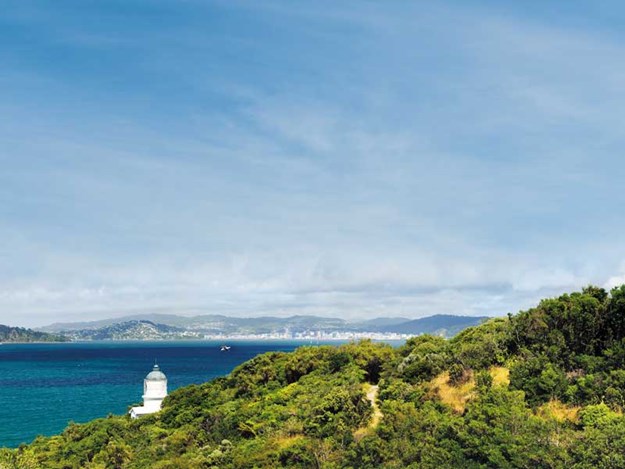 |
A lighthouse warns ships of the rocky coastline |
The heart of the harbour
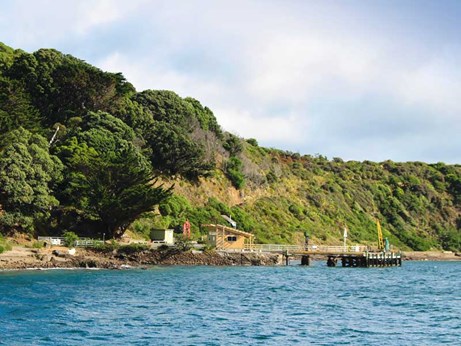 |
Heading for the wharf and biosecurity shelter |
Matiu/Somes Island sits in the heart of Wellington Harbour. Ferries stop at the island several times a day, both from Queens Wharf in the city, and the lovely Days Bay on the far side of the harbour.
The island is owned by local iwi, Taranaki Whanui, following a Treaty settlement, and is governed by a Kaitiaki Board and managed by the Department of Conservation.
Most of the paths on Matiu/Somes are buggy-friendly, so for us it was a great place to go adventuring with younger cousins.
Boats and biosercurity
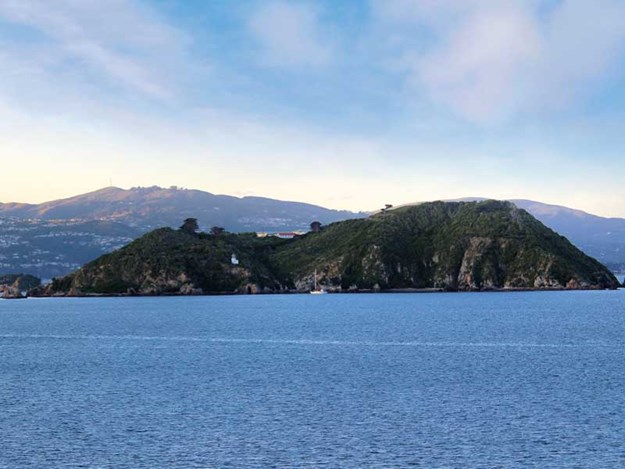 |
Matiu/Somes Island – a jewel in the centre of Wellington Harbour |
After a short, bumpy and windblown boat trip from Days Bay, we disembarked on Matiu/Somes and received the biosecurity lowdown from two of the Friends of Matiu/Somes volunteers who help look after the island. After being shepherded into the biosecurity room we emptied bags, checked pockets, and used a mini vac to suck up any nasties from the buggy basket.
While it’s not often that an animal pest is found in visitors’ gear, the ‘wall of shame’ was covered in small plastic bags full of grasses, seeds and other plant material visitors had inadvertently brought on to the island. Given the all-clear and performing a stomp dance on a doormat soaked in disinfectant, we were set free to head up the hill.
A grand entrance
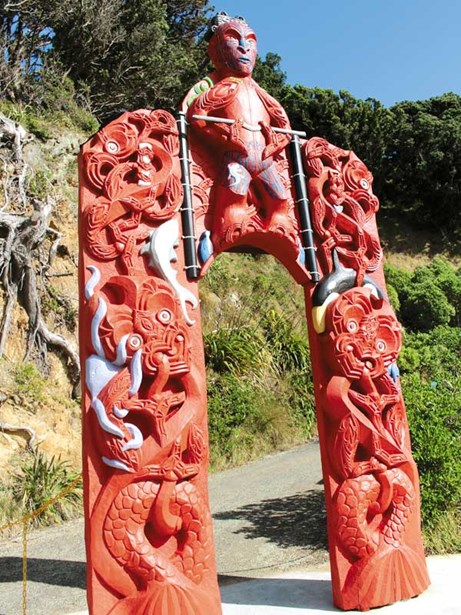 |
The waharoa (entranceway) to the island |
The first stop was only metres away; a stunning carved waharoa, or entranceway, that tells the story of Matiu/ Somes Island, from its long Maori history to the present-day volunteer work that goes into restoring it.
While the wonderful nature of the island makes it well worth visiting – it’s home to tuatara, kakariki, North Island robin, little blue penguins and weta – the human history is incredibly rich as well.
A thoughtful moment
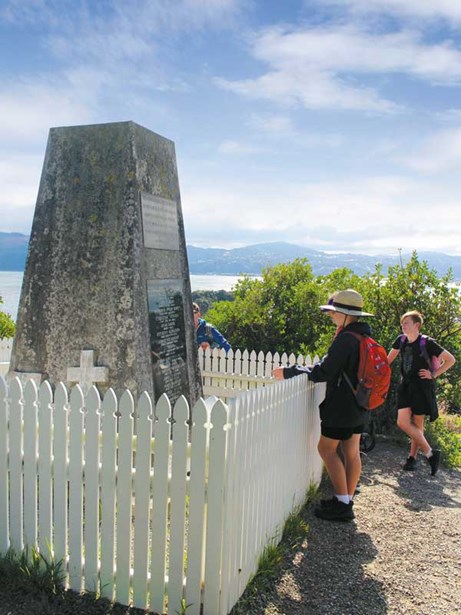 |
A memorial to many of those who died on the island |
We made our way up the paved road and near the top took a small detour to a memorial cairn. For nearly 50 years, from the 1870s to 1920s, the island was a human quarantine station.
New immigrants to the country were ‘de-liced’ on the island, and when a ship came into the harbour carrying passengers with smallpox, a full quarantine station was established, hosting many ships’ passengers over the next 10 years. Sadly many of them never left, and the memorial cairn was built in the 1970s to remember them.
Tuatara today?
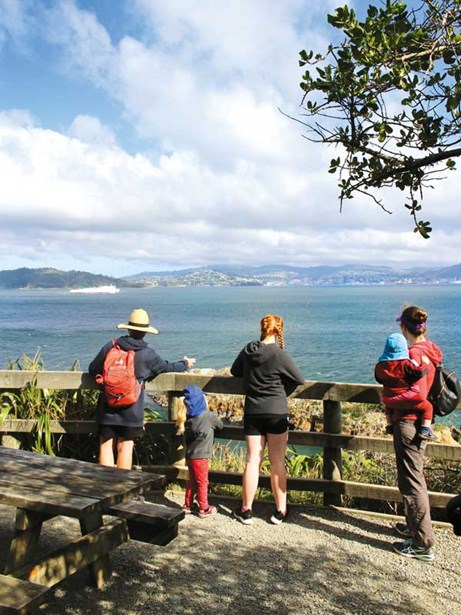 |
Great lookout spot; next up, lunch! |
Next it was time to walk around the island. We were excited about the first section, with the prospect of seeing tuatara, but alas it was not to be. It seems they prefer still, sunny days to the overcast, windy conditions we were experiencing.
So we continued our wander and soon reached a wonderful lookout area with a picnic table – the perfect spot to stop for lunch and enjoy the view of Wellington as the Interislander ferry cruised past.
Nature and history
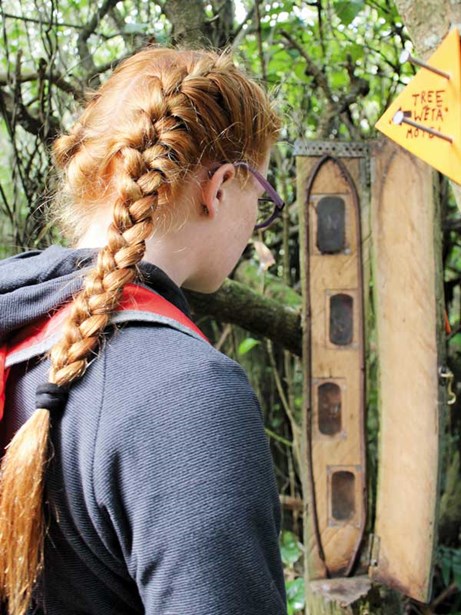 |
Keep an eye out for weta homes placed along the tracks |
Further around the island, the next highlight was the lighthouse, but not before we had discovered a couple of weta homes camouflaged in the bush. Opening up the clever contraptions, we were excited to see large Cook Strait giant weta taking time out in the
cosy homes.
Then down to the lighthouse we went. Built in 1900, the lighthouse is now fully automated, but its history is evident, with the rails that transported supplies up from the beach below still there, if a bit overgrown.
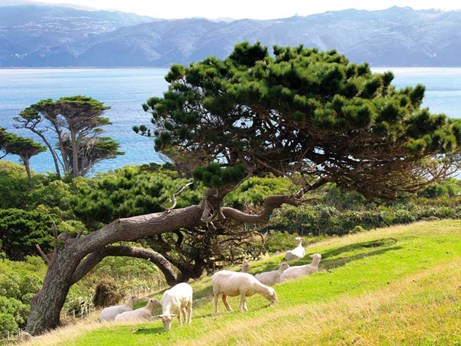 |
A flock of sheep work on grass management |
As we retraced our steps to the main track, we enjoyed the views down into the rocky bays, and a yacht anchored in a sheltered harbour. Passing another lookout, we soon took a left at the next intersection and climbed up through some bush to the grassy top of the island, a flock of sheep looking at us lazily.
War and wounds
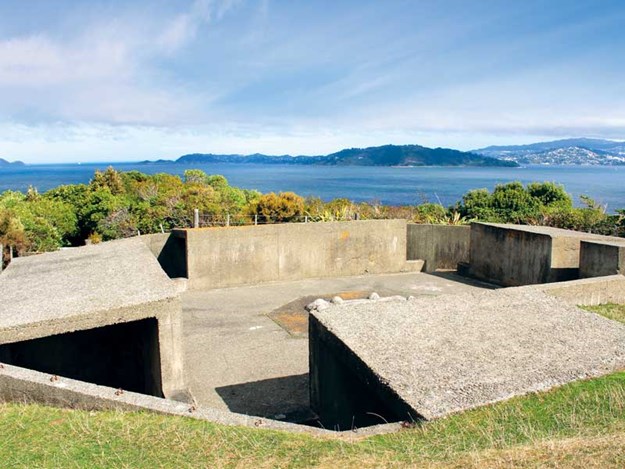 |
Second World War gun emplacements |
Dug into the nibbled, smooth grass was a series of concrete gun emplacements, built during the Second World War. These huge octagonal structures housed heavy anti-aircraft artillery guns to protect the city against attack from the air.
The military history of the island doesn’t start with the Second World War, however. The First World War saw Matiu/Somes used to hold ‘enemy aliens’, those considered to be a risk to the security of the nation.
The island held around 300 prisoners of German, Italian and Japanese descent – some had been born in New Zealand but it made no difference to the authorities.
During the Second World War it once again became an internment camp, and Maurice Gee’s novel Live Bodies gives a deep feeling for the lives of the men on the island over this time.
Maximum security
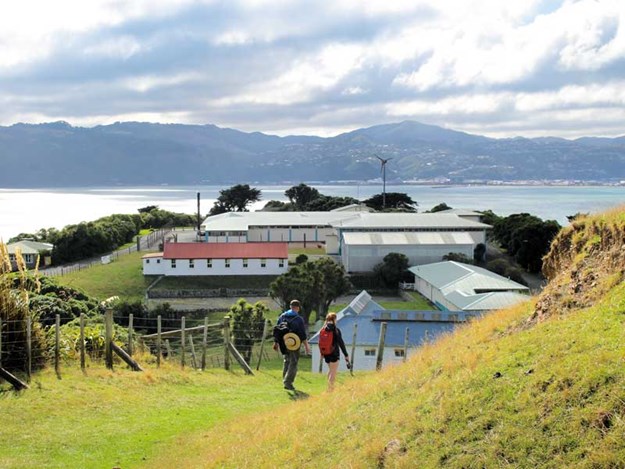 |
The buildings on the island are grouped in one spot |
From the hilltop we looked down on the buildings that congregate in the centre of the island. With the oldest building being the barracks that were built in 1919 in preparation for an influenza epidemic, there are many contrasts. Smack bang in the centre is the huge, square maximum security quarantine station built in 1971.
While Matiu/Somes had been used as a quarantine island for livestock since the 1800s, this new maximum security facility allowed New Zealand to really think outside the square in terms of animal imports, bringing in more exotic animals such as elk, red deer, alpaca and llama.
Sleeping over
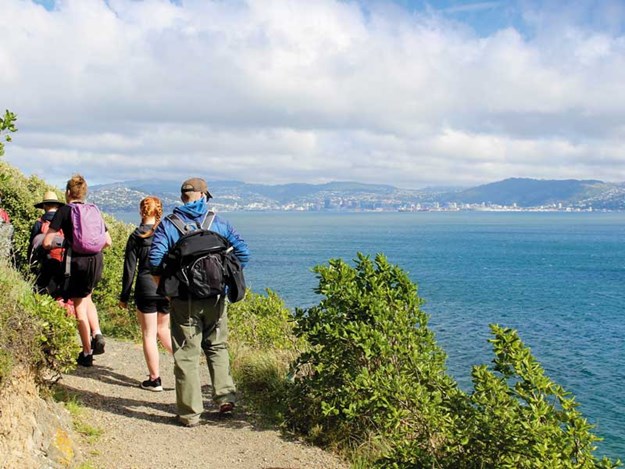 |
The tracks offer great, if windy, views of the city |
Making our way down the hill we passed the campsite facilities and a few campers setting up tents next to the historic barracks. The campsite is serviced by a block that contains a kitchen, small lounge areas and ablutions.
Other accommodation on Matiu/Somes includes two three-bedroom houses that can sleep up to eight people each. Staying overnight on the island would be amazing, with chances to see penguins and other wildlife that prefer to roam the island in the dark.
Inside activities
A wander through the quarantine station, with its concrete floored yards and various machinery, was interesting, followed by some time spent in the small visitor centre. This is a great place to learn more about the varied history of the island and the wonderful conservation work happening on it now.
Back to the beach
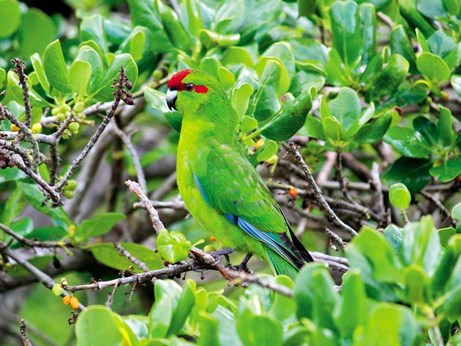 |
Kakariki, red crowned parakeet, live in flocks on the island |
With a final fruitless side trip to look for the tuatara again, our group separated and most of us took the forest track back down to the jetty. This took longer than expected – two kakariki put on a show close by and it was hard to pull this photographer away.
But the beach offered more opportunity to enjoy the kakariki as they fed on the orange berries of the coastal shrubs. The kids filled in the time waiting for the boat by lounging in the sunshine and searching for cat’s eyes on the beach.
All too soon our day on Matiu/Somes Island was over. We boarded the ferry for the return journey and already looked forward to heading back to the island for an overnight stay.
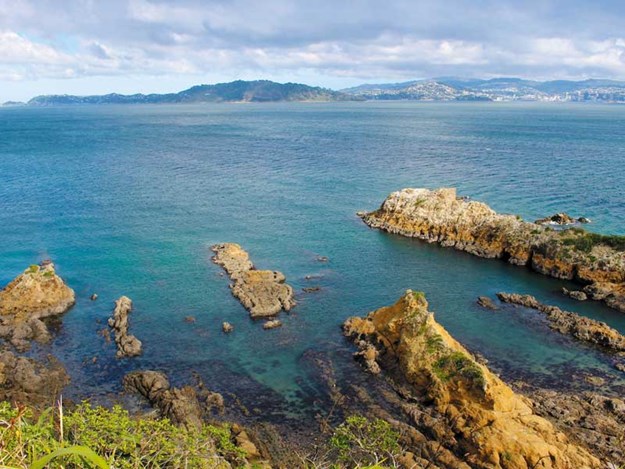 |
The island’s shoreline is fairly rugged |





